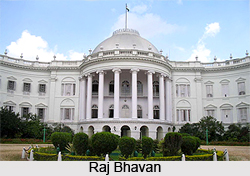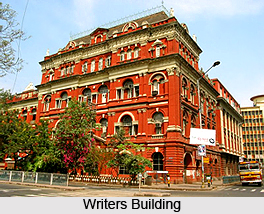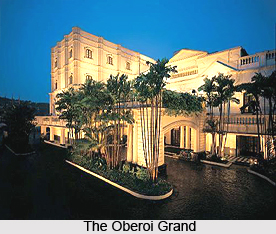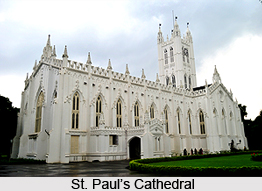 British monuments in Kolkata, West Bengal, mirror the influences of British imperialism in the city and its consequence on its cultural scenario. They narrate several tales of the bygone era and provide an excellent sketch of the culture and lifestyle prevailing in the society. Sheer testaments of architectural grandeur, these monuments were built during the period of colonial rule in India and served the various purposes of British government. The most astounding feature of these monuments remains the intactness of their stunning beauty. British monuments in Kolkata form some of the important landmarks and major tourist attractions of the city. Well preserved since ages, these impressive structures still never fails to amaze the visitors with their artistic wonders. Standing gracefully at different regions of the bustling city and boasting their glory, presently British monuments in Kolkata serve a number of public as well as private sectors.
British monuments in Kolkata, West Bengal, mirror the influences of British imperialism in the city and its consequence on its cultural scenario. They narrate several tales of the bygone era and provide an excellent sketch of the culture and lifestyle prevailing in the society. Sheer testaments of architectural grandeur, these monuments were built during the period of colonial rule in India and served the various purposes of British government. The most astounding feature of these monuments remains the intactness of their stunning beauty. British monuments in Kolkata form some of the important landmarks and major tourist attractions of the city. Well preserved since ages, these impressive structures still never fails to amaze the visitors with their artistic wonders. Standing gracefully at different regions of the bustling city and boasting their glory, presently British monuments in Kolkata serve a number of public as well as private sectors.
Raj Bhavan
Raj Bhavan serves as the residence of Governor of West Bengal. It was constructed between the period of 1799 and 1803 during the office of Marquess Wellesley, the then Governor-General of India. Raj Bhavan during the bygone era was the representative of the British imperialism. The monument is famed for having the first ever elevator of Kolkata. The architecture and the decor of the monument have a majestic appeal.
 Kolkata Town Hall
Kolkata Town Hall
Kolkata Town Hall was constructed in the year 1813 in Roman Doric architectural style. It was built with the purpose of providing a place to the Europeans for social gatherings. The fund for its building was raised through a lottery. In the year 1867, the hall came under the custody of Calcutta Municipality and in 1897 it was renovated partly.
Writers Building
Writers Building is one of the most beautiful testaments of classical European architecture which presently serves as the secretariat of the West Bengal State Government. This colossal building attained its structure in 1889 and then served as the government agency for British East India Company. Presently the building houses a number of departments of state government.
Howrah Station
Howrah Station was structured during the British reign in 1854. The same year also marked the running of first train from the station to Pandua. It was built as an effort to create the second railway link from Kolkata to Bardhaman coalfields. Previously a single line track was made in the station for the purpose of transporting goods only, which later on extended in 80s to incorporate 8 more platforms. Since then it has undergone several phases of renovation and has presently emerged as one of the largest railway terminals of the country.
General Post Office
General Post Office is another spectacular British monument of Kolkata which handles the city`s major outbound and inbound parcels and mails. The massive structure was constructed by Walter B. Grenville in 1864. The building is noted for its tall Ionic-Corinthian pillars and high domed roof. In 1884 a postal museum was also built which exhibits an enormous collection of stamps and artefacts.
 Great Eastern Hotel
Great Eastern Hotel
Great Eastern Hotel was built in Kolkata in colonial era when the city served as the capital of East India Company. Constructed in 1840, the hotel has hosted some of the eminent personalities visiting Kolkata. In the bygone eras, the hotel was called as "the Jewel of the East". During the Naxalite movement the splendour and prosperity of the hotel declined till 1970s after which its management was owned by the state government. The hotel is one of the finest specimens of architectural grandeur.
The Oberoi Grand
The Oberoi Grand, previously known as the Grand Hotel, is another spectacular monument of British era. Owned by Oberoi chain of hotels, the building exhibits elegant neoclassical style of architecture with stucco ornamentation. It gained a great prominence during the World War II when the hotel lodged about 4000 soldiers and there were regular parties.
Sealdah Railway Station
Sealdah Railway Station is one of the most significant railway stations, which serves a huge crowd in Kolkata. It was established in 1869 and has three station terminals. Sealdah station housed tram terminus before 1978.
St. Paul`s Cathedral
St. Paul`s Cathedral, erected in 1847, is a magnificent testament of Gothic Revival style of architecture. The building was constructed by Bishop Daniel Wilson during the colonial era. The church is beautifully adorned with stained glass windows and frescoes. St. Paul`s Cathedral forms one of the major tourist attractions of the city.
Calcutta High Court
Calcutta High Court, established in 1862, is the oldest high courts of India build during the British rule of India. The court has jurisdiction over the state of West Bengal and the union territory of the Andaman and Nicobar Islands. In architectural terms the building is the exact replica of the Cloth Hall, Ypres, in Belgium. Barnes Peacock was the first Chief Justice of Calcutta High Court.
 Metropolitan Building
Metropolitan Building
Metropolitan Building, previously known as the Whiteway Laidlaw department store, was erected during the colonial rule in India. The building formerly served as a well known department store in the city. Arched recessed windows, beautiful domes and clock towers are the representatives of the fashionable shopping prevalent during British era. After independence the building was owned by Metropolitan Life Insurance Co. The building has undergone renovation after it was ravaged by a fire in 1991.
Other British Monuments in Kolkata
Other prominent British monuments in Kolkata include Esplanade Mansions, Victoria Memorial, St. Johns Church, Fort William and others.



















